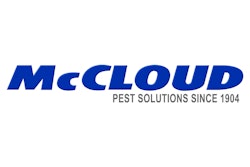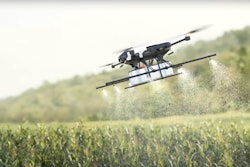
Most food and beverage companies are diligent about cleaning and sanitizing their facilities to keep them safe and pest-free. But some cleaning strategies are detrimental to pest-control efforts. From pressure washing to air compression, food and beverage facilities need to make sure that they are properly managing how their sanitation tools are used and stored for effective pest prevention and sterilization. ProFood World caught up with McCloud Services, a pest-management company, for some tips on sanitary techniques that ensure facilities maintain a pest-free, safe environment.
Many food and beverage facilities use compressed air and pressure washing. While these cleaning techniques are effective, they can also move food to inaccessible cleaning areas and degrade structural components of a plant, creating increased risk for pest problems.
Compressed air
For example, many dry processing food plants use compressed air to get materials like flour and powders out of cracks and crevices. But it can also move those powdery substances to inaccessible areas, such as ceiling voids, overhead pipes and electrical boxes. The compressed air blasts can also move insects harboring in products to new areas — spreading infestation.
McCloud Services recommends that facility staff vacuum first and then use compressed air to remove the residual powder out of areas where the vacuum cannot reach. Combination vacuum units with dual capabilities of vacuuming and applying compressed air can help with this task. Make sure staff promptly discard the vacuum contents, especially if insects have been vacuumed. If compressed air is being used to move food residues out of cracks and crevices, consider sealing these openings.
Pressure washing
Many wet processing facilities use high-pressure washing to clean floors and other areas. But, like compressed air, the force of the water tends to push food debris into inaccessible areas for cleaning. These areas include underneath equipment and floor areas where the pitch of the floor does not allow for proper drainage.
McCloud Services recommends raising equipment off the floor to reduce the organic debris collection points underneath equipment. If that’s not possible, McCloud Services suggests cleaning these areas regularly to prevent food deposits. The company also says placing equipment on wheels can improve access for staff to clean those areas.
High-pressure cleaning can also lead to rapid deterioration of floor coatings and tile grout. That can create an environment attractive to pests like small flies and allow for moist organic material to accumulate between and underneath floor tiles. McCloud Services suggests using Epoxy grout, which is more resistant to high-pressure hoses than other grouting material.
Moisture and organic debris can also accumulate in areas where floor mats are located, so staff should pick up floor mats every night to allow for proper floor cleaning and drying.
In addition, organic debris can be pushed into ramps during power washing of floors. McCloud Services recommends either sealing the ramps tightly or removing them regularly for proper cleaning.
Storing sanitation tools
It’s not just about sanitation techniques. Storing sanitation tools properly after using them is just as crucial for pest control. The company recommends emptying the contents of wet and dry vacuums immediately to an exterior trash receptacle or drain. It’s important to dispose of any vacuumed insects to reduce the potential for infestation. If wet vacs are left full, they can serve as breeding sites for small flies.
McCloud services also suggests storing mops and brooms on wall-mounted racks with mop buckets emptied of water. If stored improperly, these tools can attract insects.
These cleaning techniques help reduce food, water and shelter sources for pests in your plant, creating a safe and clean environment.
“Many plant managers don’t realize the importance of proper sanitation in food facilities and its direct effects on pest management,” says Patricia Hottel, BCE, technical director of McCloud Services. “Following best practices like sealing cracks and crevices in floors, properly cleaning and drying out mats each night, and emptying vacuumed-up contents to an exterior trash receptacle or drain are vital in preventing pests that can lead to food borne illnesses or other hazardous results.”


















